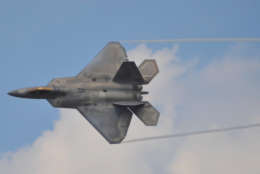Carahsoft
-
Rick Howard, the chief security officer for Palo Alto Networks, said the wide-spread acceptance of using cloud services for operational requirements is driving opportunity to modernize.
September 30, 2019 -
The authority to operate (ATO) process–the bane of many CIOs and developers existence in the federal sector. It is one of those necessary evils of federal technology. But it’s such a problem that agencies over…
September 05, 2019 -
NSA contracted with Palo Alto Networks to put a Zero Trust architecture in place to protect all its sensitive medical data.
September 05, 2019 -
Juliana Vida, the chief technical advisor public sector for Splunk, said there is hope and there is opportunity, both of which can be found in the data.
August 13, 2019 -
The ultimate objective is to eliminate the need to work on multiple devices. Using the cloud, the data is all in one place and easier to access, and easier to share.
August 08, 2019 -
Traditional development processes like waterfall just don’t cut it anymore. That’s why Lockheed Martin reached out to Red Hat for help updating the processes and culture around application development for the F-22 Raptor fighter jet.
July 26, 2019 -
Chris Townsend, the vice president of federal at Symantec, said with all of these cybersecurity initiatives and expectations agencies must ensure they are on the right path in moving to zero trust, while also addressing challenges around mobility and cloud.
July 17, 2019 -
Craig Harber, the chief technology officer for Fidelis Cybersecurity, said there are several steps agencies can take to reduce their risks, starting by consolidating their security tools and architectures.
July 01, 2019 -
FireEye has an internal-facing insider threat program, where they fine-tune techniques for preventing insider threat breaches.
June 28, 2019 -
Dennis Reilly, the vice president of federal at Gigamon, said tools like next generation network packet brokers help agencies catch up and get ahead of cyber attackers.
May 30, 2019 -
Eva Skidmore, the vice president of public sector for Salesforce, said agencies need to continue to improve customer service and IT modernization together by adopting open platforms and application programming interfaces (APIs).
May 13, 2019 -
Joel Jackson, the director of emerging technology for Red Hat’s North America Public Sector group, said all of these approaches bring together the key building blocks of modern software design--cloud, automation and microservices--and underpin federal IT modernization efforts.
May 06, 2019 -
Bots powered by robotic process automation at the Defense Logistics Agency face limits based on the amount of time a human operator stays logged into the network. But the agency plans to ramp up its…
April 26, 2019 -
The TAA system, part of Symantec’s Advanced Threat Protection product, cuts hours of human analysis out of the process through automation and machine learning.
March 08, 2019 -
Jim Walker, director of public sector marketing for UiPath, said 25-to-30 agencies already are taking advantage of RPA to automate menial, repetitive tasks.
March 08, 2019















